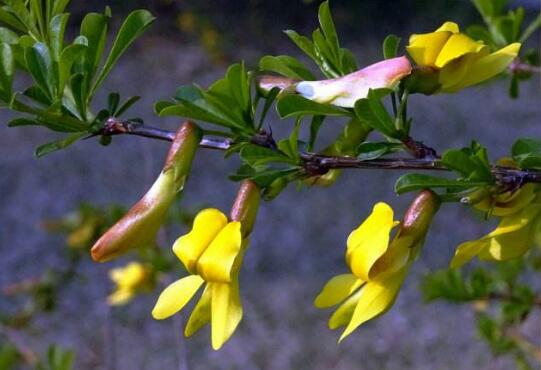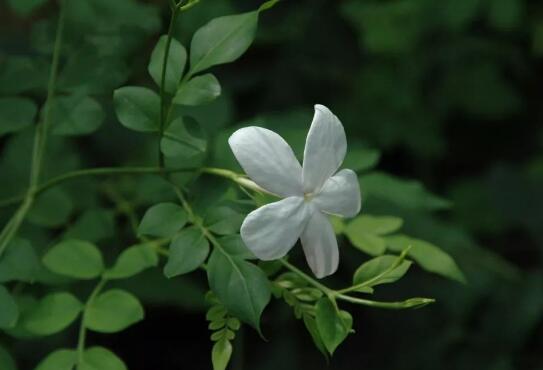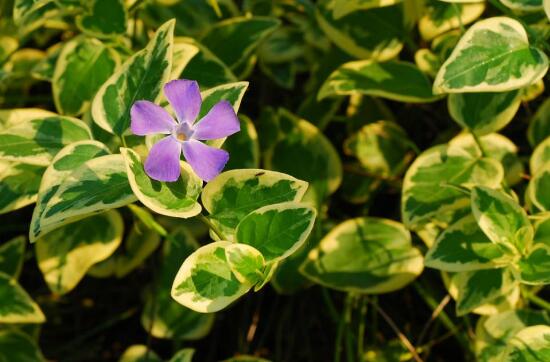How to raise broom, breeding methods and precautions / regular pruning
Broom is a world-famous flower plant, which can be seen all over the world, but it is not easy to raise this plant well. There are many things we need to pay attention to. About how to raise broom? What are the breeding methods and matters needing attention of broom? Next, the editor will take you to learn about it.
First, how to raise broom flowers and understand their habits

If we want to know how to raise broom, we must first understand its growth habits. This plant is more light-loving, so we should keep it in sufficient light when we breed it. In addition, we also need to pay attention to daily water and fertilizer management. As for the details are described in detail below, let's take a look.
II. Culture methods and matters needing attention of broom
1. Soil
If you want broom to thrive, you need to let it grow in suitable soil. Choosing soil is a step to lay a good foundation, which is very important. Generally, we'd better choose loose and fertile sandy loam. This kind of soil has good drainage and air permeability, which can make plants better absorb nutrients and is not prone to stagnant water.
two。 Fertilizer application
Fertilizer is one of the main nutrients in the growth process of broom, especially after entering its growth period, its demand for fertilizer is very high, basically we need to apply fertilizer once a month, so that the plant will have sufficient nutrients to thrive. However, there is one thing we should pay attention to when fertilizing, that is, thin fertilizer should be applied, and the concentration should not be too high, otherwise it is easy to burn plants.
3. Moisture content
Broom is a plant that avoids waterlogging, so when we breed it, we should not overwater it. We should maintain the principle of "no dry, no watering, watering thoroughly". We can properly water more when entering summer, but we should control the amount of water. if there is stagnant water in too much watering, it is easy to cause the root system of the plant to rot.
4. Light
Broom is more like light, but not resistant to strong light, if it is in spring and autumn, because the light is more suitable, we can keep it outside to receive light all day, but after entering summer, because the light is relatively strong, we still need to pay attention to shade, so as not to burn the plant caused by long-term exposure.
5. Pruning
In the process of breeding broom, we also need to prune it regularly to cut off some overgrown branches and some withered, diseased and weak branches, which can not only maintain the beauty of the plant type, but also help to ventilate and penetrate the plant. it can also play a role in promoting its branches, so as to make the plant more full.
6. Diseases and insect pests
In the process of the growth of broom, if we are not careful enough in conservation, it is very easy to let diseases and insect pests take advantage of the situation. This kind of problem is very harmful to the plant, so we must deal with it as soon as it is discovered. As for the specific treatment methods, you can refer to the article on pest control of broom, which contains detailed teaching.
Culture methods and matters needing attention of broom
Broom is a kind of leguminous plant, it belongs to creeping herb, it has long flowering period, bright color, high ornamental value, can be planted in a large area and can be cultivated in pots, but people don't know much about its breeding methods. I don't know what to pay attention to when raising broom, so that my broom can not be raised well. Today, I will introduce some knowledge related to broom culture. Friends who like this kind of plant can learn more about it.
Culture methods of broom
1. Soil selection
When cultivating broom at ordinary times, it is very important to choose a suitable soil. This kind of plant likes sandy soil with medium fertility and good drainage, and the soil had better become acidic. Usually, rotten leaf soil and river sand can be mixed together to make culture soil to cultivate broom, and its survival rate is particularly high.
2. Mode of reproduction
Broom this kind of plant has many different ways of reproduction, it can not only sow and reproduce, but also can reproduce separately, but sowing and breeding need to go through many complex procedures such as soaking seeds and raising seedlings, which is not commonly used in daily life. Split propagation is his most common way of reproduction, but we must pay attention to the specific operation, do not damage its root bark, otherwise it will be very difficult to survive.
Matters needing attention in culture
1. Pay attention to watering and fertilization
When breeding broom at ordinary times, must pay attention to watering and fertilizing, this kind of plant is afraid of waterlogging, usually can not excessive watering, as long as keep the basin soil moist. Broom has a large demand for fertilizer during the re-growth period, it can be fertilized once a month, and the fertilizer is mainly thin liquid fertilizer, but it needs to be topdressing once before it is civilized, which will help to prolong its flowering period.
2. Pay attention to pruning
When breeding broom at ordinary times, pay great attention to timely pruning. Under normal circumstances, the pruning of this plant needs to be carried out in spring and winter. In spring, the short and weak branches after flowering are mainly trimmed, and in winter, those overlong branches after falling leaves are mainly trimmed to keep the plant shape beautiful.
What are the points for attention in broom culture?
Broom, commonly known as Caragana, is a common deciduous shrub in high-altitude areas of China. Peanut leaf axils bloom from April to May, petal tip slightly pointed, side divided into two petals, potential such as sparrow, golden color, hence the name "broom". It has strong adaptability and wide value, so it can be used as an ornamental plant and planted in courtyard, lawn and garden roadside. So, what are the broom culture methods?
A brief introduction to broom
Broom (Latin name: Parochetuscommunis), also known as purple broom, is a creeping herb of the genus Leguminosae, 10 to 20 centimeters tall and sparsely pilose. Rhizome filiform, rooting at nodes, with nodules. The tip of the valve is slightly pointed, and the side is divided into two valves, such as a flying sparrow, golden in color, hence the name "broom". Born in forest edge grassland, hillside, roadside wasteland, 2000-3000 meters above sea level. Produced in Sichuan, Yunnan, Xizang. India, Nepal, Bhutan, Sri Lanka, Myanmar, Thailand, Malaysia and eastern Africa are also distributed.
Creeping herbs, 10-20 cm tall, sparsely pilose. Rhizome filiform, rooting at nodes, with nodules. Compound leaves palmately Ternate; stipules broadly lanceolate-ovate, 4-5 mm long, membranous, glabrous, entire; petiole fine, 8-15 cm long, puberulent. Leaflets obcordate, 8-20 mm long and 10-20 mm wide, base narrowly cuneate, margin entire, or sometimes undulate shallowly crenate, glabrous above, appressed pilose below, lateral veins 4-5 pairs, forked and knotted at margin, veinlets reticulate, inconspicuous, flat on both surfaces; petiolule very short, ca. 1 mm.
II. Broom culture methods
1. Watering
Master the principle of watering thoroughly if it is not dry or watered. Especially in the flowering period, we should pay attention to keep the basin soil moist, which can prolong its flowering period.
2. Pruning
After falling leaves in winter, all kinds of branches that affect the shape of the tree can be cut off. After blooming in spring, cut short the flowering branches to promote the growth of new flower branches. During the peak growth period, the pruning of long branches can be carried out at any time, and the heart can be picked properly to maintain the beauty of the tree.
3. Turn the basin
Turn the basin every 2-3 years, and the appropriate period is early spring. When turning the basin, the old soil around 1B2 can be removed, and the excessively long roots can be cut short properly. It can also be combined with turning the basin to lift the root shape.
Matters needing attention in broom culture
1. Moisture control. The moisture requirements of broom are mainly concentrated before flowering and during the growing period. During the growing period, it is mainly necessary to supplement the water consumption in the process of plant growth, while before flowering, in addition to the water needed for plant growth, it is also necessary to maintain the wettability of the planting soil so as to prolong the florescence of broom.
2. Pruning work should be carried out in time. The pruning work of broom is mainly concentrated in spring and winter. In spring, the short branches are pruned after flowering to make better use of the nutrients of the whole plant, while in winter, those overlong branches are pruned after defoliation to meet the aesthetic requirements of the plant.
The above is the relevant introduction of this article, I believe you have a simple understanding of this after reading it, if necessary, you can continue to pay attention to the No. 1 home network to learn more information.
- Prev

How to raise Jasminum flowers, breeding methods and matters needing attention / frequent fertilization of Jasminum
Jasminum is a kind of common flower plant in the world, which has high ornamental value, but it is not easy to raise it well. There are many things we need to pay attention to. How to raise Jasminum? What are the breeding methods and matters needing attention of Suxin flowers? Next, the editor will take you to learn about it.
- Next

How to raise flower and leaf vine in Changchun, the culture methods and matters needing attention of flower and leaf vine in Changchun
Flowers and leaves vine longevity, flower friends should have heard, it is a common green plant, not only good-looking, but also tenacious vitality, more importantly, it is very easy to raise! It is precisely because of this, now more and more people begin to raise them, do you know how to raise flowers and leaves in Changchun? To this
Related
- Fuxing push coffee new agricultural production and marketing class: lack of small-scale processing plants
- Jujube rice field leisure farm deep ploughing Yilan for five years to create a space for organic food and play
- Nongyu Farm-A trial of organic papaya for brave women with advanced technology
- Four points for attention in the prevention and control of diseases and insect pests of edible fungi
- How to add nutrient solution to Edible Fungi
- Is there any good way to control edible fungus mites?
- Open Inoculation Technology of Edible Fungi
- Is there any clever way to use fertilizer for edible fungus in winter?
- What agents are used to kill the pathogens of edible fungi in the mushroom shed?
- Rapid drying of Edible Fungi

